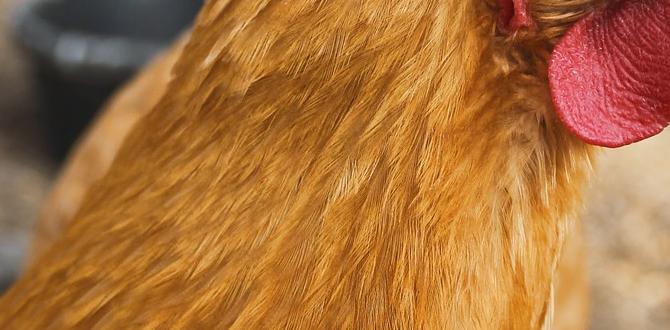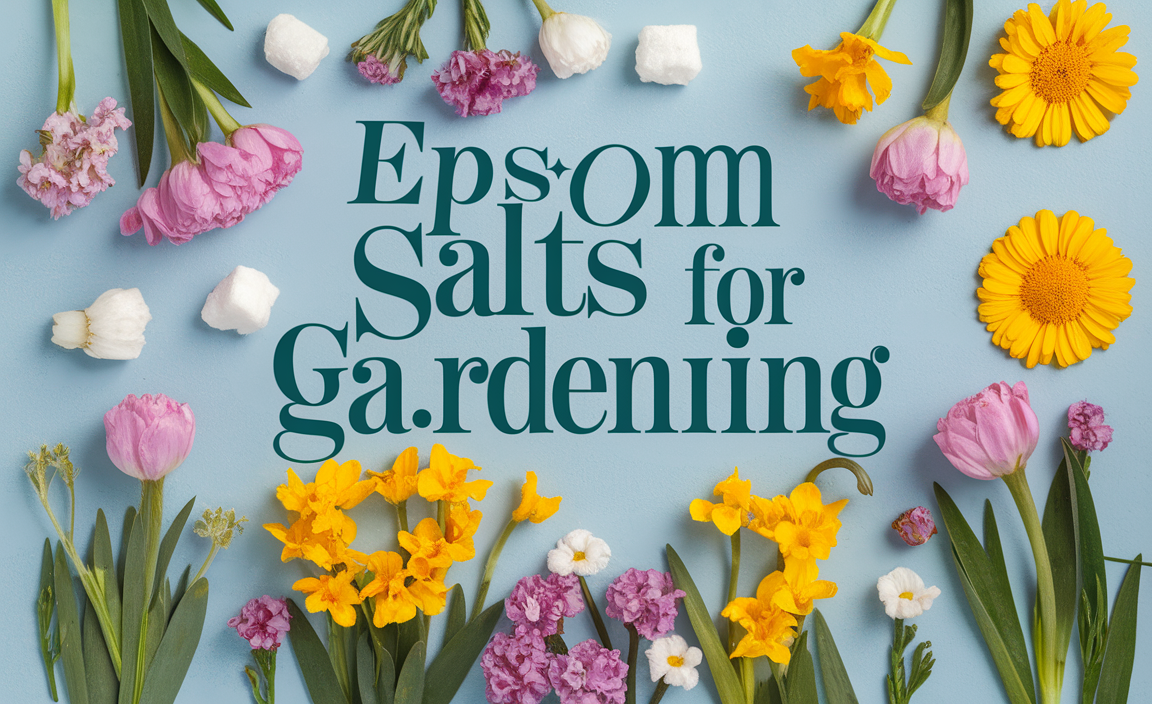Compost bin setup is straightforward! This guide makes creating your own compost bin easy, transforming kitchen scraps and yard waste into nutrient-rich “black gold” for your garden, reducing waste effortlessly. Follow these simple steps for a successful start.
Compost Bin Setup: Your Genius, Essential Guide to Black Gold
Feeling overwhelmed by kitchen scraps and yard trimmings? Do you want to give your garden a super boost without buying expensive fertilizers? You’re not alone! Many people think setting up a compost bin is complicated, but it’s actually one of the simplest and most rewarding steps you can take for a greener home and a healthier garden. We’ll break it all down, step-by-step, so you can start turning that “waste” into wonderful, life-giving compost. Get ready to discover how easy it is to create your own garden superpower!
Why Bother with a Compost Bin? The Magic Ingredient for Your Garden
Composting is like a superpower for your garden. It’s nature’s way of recycling, breaking down organic materials into a rich, dark, crumbly substance called compost. This isn’t just dirt; it’s packed with nutrients that your plants will absolutely love. Think of it as a superfood for your soil!
Using compost has incredible benefits:
- Enriches Soil: It improves soil structure, making it easier for roots to grow and for water to penetrate.
- Adds Nutrients: Compost is brimming with essential elements that feed your plants, promoting healthier growth and vibrant blooms.
- Reduces Waste: You’ll significantly cut down on the amount of trash you send to the landfill, which is fantastic for the environment.
- Saves Money: Why buy bags of soil amendment when you can make your own for free?
- Improves Soil Drainage and Aeration: This helps prevent waterlogging and allows oxygen to reach plant roots.
- Suppresses Plant Diseases and Pests: Healthy soil leads to healthy plants that are more resilient.
Choosing Your Compost Bin Style: What’s Right for You?
The first big decision is what kind of bin to use. Don’t worry, there’s no single “best” option. It depends on your space, how much waste you generate, and how quickly you want compost. Here are some popular choices:
1. The Simple Compost Pile
What it is: Basically, a free-standing heap of organic materials in a corner of your yard. No fancy container needed!
Pros:
- Easiest and cheapest to start.
- Can handle large volumes of material.
- Good aeration if managed well.
Cons:
- Can look messy if not maintained.
- May take longer to compost.
- Potentially less attractive to neighbors if unsightly.
- Can attract pests if not layered correctly.
2. Stationary Bins (DIY or Purchased)
What it is: These are enclosed bins with or without a lid, often made from wood, wire mesh, or plastic. They keep the materials contained.
DIY Wooden Bin: You can build a simple, sturdy bin using pallets or scrap lumber. A common design is a square or rectangular bin, often with an open front or removable slats for easy access. Resources like Oregon State University Extension offer great plans for building sturdy, effective compost bins.
Purchased Plastic Bins: These are readily available at garden centers. They are durable, often have lids to retain moisture and heat, and some have convenient doors at the bottom for harvesting finished compost. They come in various sizes, suitable for smaller yards.
Pros:
- Neater appearance than an open pile.
- Helps retain heat and moisture, speeding up decomposition.
- Keeps materials contained.
Cons:
- Can be more expensive to purchase.
- DIY can take some effort and basic building skills.
- May have limited capacity depending on size.
3. Tumbler Bins
What it is: These are enclosed drums or barrels mounted on a stand, designed to be rotated or “tumbled.”
Pros:
- Very fast composting due to frequent aeration and mixing.
- Keeps pests out effectively.
- Easy to turn and mix materials.
- Neat and tidy solution.
Cons:
- Can be the most expensive option.
- Capacity is usually smaller than other types.
- Can get very heavy when full, making tumbling difficult.
- Chop materials smaller for best results.
4. Worm Composting (Vermicomposting)
What it is: This is a specialized form of composting using red wiggler worms to break down food scraps. It’s ideal for apartment dwellers or small spaces, as it can be done indoors or on a balcony. You can buy or build specialized worm bins.
Pros:
- Produces nutrient-rich worm castings, highly prized by gardeners.
- Can be done indoors, ideal for small spaces.
- Fast processing of kitchen scraps.
Cons:
- Requires specific types of worms (red wigglers, not earthworms).
- Cannot handle large volumes of yard waste.
- Requires careful management of moisture and temperature.
- Some people are squeamish about worms.
Where to Place Your Compost Bin: Location, Location, Location!
The spot you choose for your compost bin can make a big difference in how well it works and how convenient it is for you. Here’s what to consider:
- Accessibility: Make sure it’s easy to get to with your kitchen scraps, yard waste, and a wheelbarrow or bucket when the compost is ready.
- Sunlight: A spot that gets some sun is ideal. Too much direct, intense sun can dry it out too quickly, while too much shade might keep it too cool and slow down decomposition. A balance is best.
- Drainage: The area should drain well. You don’t want your compost bin sitting in a puddle after it rains.
- Water Source: It’s helpful to be reasonably close to a water source (like a garden hose) because you’ll need to keep the compost moist.
- Airflow: Ensure there’s good air circulation around the bin.
- Space: Give yourself enough room to toss in materials, turn the compost if needed, and harvest the finished product.
- Neighborly Consideration: While a well-managed compost bin smells earthy, try to place it where it won’t be an eyesore or odor concern for neighbors.
What Goes In, What Stays Out: The Art of Composting Ingredients
Composting is all about creating the right balance. You need a mix of “greens” and “browns.” Think of it like a recipe for fantastic soil food!
The “Greens” (Nitrogen-Rich Materials)
These materials are typically moist and break down quickly. They provide nitrogen, which helps the microorganisms multiply and heat up the pile.
- Fruit and vegetable scraps (peels, cores, rinds)
- Coffee grounds and tea bags
- Grass clippings
- Plant trimmings (non-diseased)
- Eggshells (crushed)
The “Browns” (Carbon-Rich Materials)
These materials are usually dry and provide carbon, which helps create air pockets and prevents the pile from becoming a slimy mess.
- Dried leaves
- Straw and hay
- Shredded newspaper and cardboard (avoid glossy paper)
- Wood chips and sawdust (in moderation)
- Small twigs and branches
What to Avoid (The “No-No” List)
Some things shouldn’t go into your compost bin because they can attract pests, spread disease, or simply won’t break down properly.
- Meat, bones, and dairy products: These attract rodents and can create unpleasant odors.
- Oily or greasy foods: They slow down decomposition and can attract pests.
- Diseased plants: You don’t want to spread plant diseases to your garden.
- Weeds that have gone to seed: The seeds might survive the composting process and sprout in your garden.
- Pet waste (dog and cat feces): These can contain harmful pathogens.
- Treated wood: Chemicals can leach into your compost.
- Synthetic materials: Plastics, metals, and synthetic fabrics don’t break down.
Step-by-Step: Setting Up Your Compost Bin
Ready to get started? Here’s how to set up your chosen bin, whether it’s a pile, a bin, or a tumbler.
For a Simple Compost Pile or Stationary Bin:
- Choose Your Location: Select a suitable spot based on the criteria above (accessibility, drainage, sun/shade balance).
- Prepare the Ground: If you’re building a pile, clear a base area. For a bin, ensure the ground underneath is level and allows for good drainage and contact with soil organisms. Some people place a layer of coarse twigs or branches at the bottom to improve airflow.
- Start Layering: Begin by adding a layer of “browns” (like dried leaves or straw) about 4-6 inches deep. This helps with initial aeration.
- Add “Greens”: Next, add a layer of “greens” (like vegetable scraps or grass clippings). Aim for a ratio of roughly 2-3 parts browns to 1 part greens by volume. You can also sprinkle a shovel-full of finished compost or garden soil on top – this inoculates your new pile with beneficial microbes.
- Continue Layering: Keep alternating layers of greens and browns as you add materials. Burying kitchen scraps within a layer of browns helps deter pests and odors.
- Moisten As You Go: Each layer should be slightly damp, like a wrung-out sponge. If your materials are dry, sprinkle them with water.
For a Tumbler Bin:
- Assemble Your Tumbler: Follow the manufacturer’s instructions to put your tumbler together.
- Choose Your Location: Place the assembled tumbler in its final spot, ensuring it’s level and accessible.
- Add Initial Materials: Start by adding a mix of greens and browns. Tumblers work best when not packed too tightly. A good starting ratio is also around 2-3 parts browns to 1 part greens.
- Chop Larger Items: Cut larger scraps into smaller pieces to help them break down faster in the enclosed tumbling environment.
- Moisten: Ensure the initial mix is slightly damp.
- Begin Tumbling: Close the lid and start tumbling.
Maintaining Your Compost Bin: Keeping the Microbes Happy!
Once your bin is set up, it needs a little care and attention to turn into that magical compost. The key is to keep your compost happy and healthy!
1. The Green-to-Brown Ratio is Key
As mentioned, the ideal ratio is roughly 2-3 parts carbon-rich “browns” to 1 part nitrogen-rich “greens” by volume. If your compost is too wet and smelly, add more browns. If it’s dry and not heating up, add more greens and moisture.
2. Aeration: Let it Breathe!
Microbes need oxygen to do their work.
- For Piles/Bins: Turn your compost pile regularly using a pitchfork or compost aerator. Aim to do this every 1-2 weeks. Turning mixes the materials, adds air, and helps speed up decomposition.
- For Tumblers: Simply turn or tumble the bin every few days.
3. Moisture Content: The Damp Sponge Test
Your compost pile should be as moist as a wrung-out sponge.
- Too Dry? Add water. If it’s a large pile, you might need to turn it while watering to ensure even distribution.
- Too Wet? Add more dry “brown” materials like shredded cardboard or dry leaves, and turn the pile to help it dry out. A lid can help prevent excessive rain from waterlogging a bin.
4. Turning and Mixing: The Speedy Accelerator
Regularly turning your compost pile is crucial for speeding up the process. It introduces oxygen and helps heat the pile, which breaks down materials faster. If you’re less concerned about speed and more about ease, you can turn it less often. Hot composting (regular turning and ideal conditions) can yield compost in as little as 1-3 months, while cold composting (less turning) can take 6-12 months or longer.
5. Patience is a Virtue
Composting is a natural process. Depending on your methods, bin type, and the materials you use, it can take anywhere from a few weeks to over a year to get finished compost. Don’t get discouraged if it takes time!
What is Finished Compost? How to Tell When It’s Ready
You’ll know your compost is ready when:
- It looks dark brown and crumbly, like rich soil.
- It smells earthy and pleasant – not sour or ammonia-like.
- You can no longer recognize the original materials you put in it.
- The temperature of the compost pile has cooled down to ambient air temperature.
To harvest, you can sift the compost to remove any larger, undecomposed pieces (which can go back into the new compost pile) or simply use it as is. Resources like the EPA offer excellent comprehensive guides on composting best practices.
Troubleshooting Common Composting Issues
Even with the best intentions, you might run into a few snags. Here’s how to fix them:
| Problem | Cause | Solution |
|---|---|---|
| Bad Odor (Ammonia-like) | Too much “green” material (nitrogen). Pile is too wet. | Add more “brown” materials (leaves, cardboard). Turn the pile to aerate. Ensure good drainage. |
| Bad Odor (Rotten Egg/Sulfur smell) | Pile is too wet and compacted. Not enough air. | Turn the pile thoroughly to introduce air. Add dry brown materials. Break up any matted sections. |
| Pile is not heating up / Decomposing slowly | Too many “browns” (carbon). Pile is too dry. Pile is too small. Not enough nitrogen. | Add more “green” materials. Add water. Make the pile larger (aim for at least 3x3x3 feet). Turn the pile. |
| Attracting Pests (Rodents, Flies) | Exposed food scraps. Inappropriate materials (meat, dairy, oils) added. | Bury kitchen scraps deep within the pile, covering them with browns. Avoid adding meat, dairy, and oily foods. Use a bin with a lid or a tumbler. |
| Pile is too wet | Too much rain. Not enough browns. Poor drainage. | Add plenty of dry brown materials. Turn the pile to aerate and dry it out. Cover the pile during heavy rain. Ensure good drainage at the base. |
Frequently Asked Questions About Compost Bin Setup
Q1: How big does my compost bin need to be?
A1: For most outdoor systems, a minimum size of 3 feet x 3 feet x 3 feet (about 1 cubic yard) is recommended. This size helps the pile generate and retain heat effectively, which speeds up decomposition. Smaller bins will still compost, but it might take longer.
Q2: Do I need to buy a special compost bin?
A2: Not at all! You can start with a simple pile. DIY bins made from pallets or wire mesh are also cost-effective. Purchased bins or tumblers offer convenience but aren’t essential.




